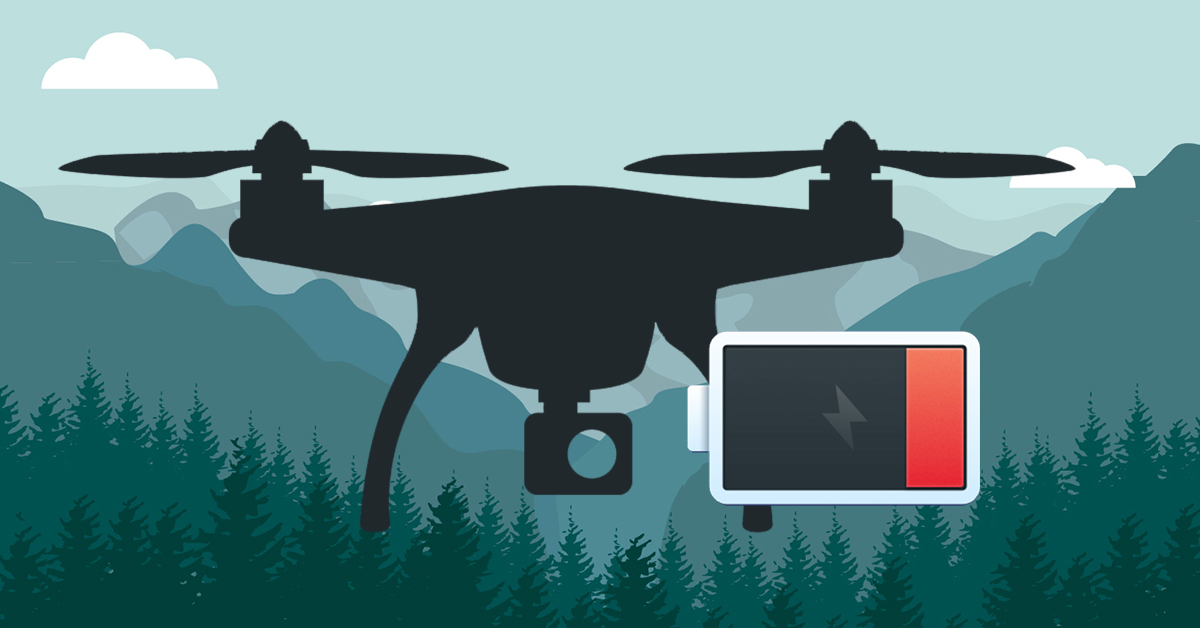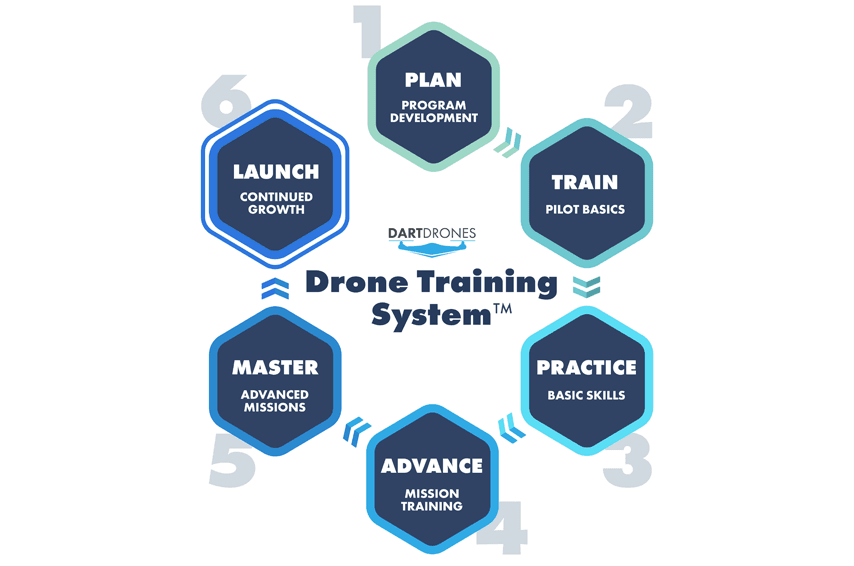
5 Essential LiPo Battery Tips for Drone Owners
Lithium-ion Polymer (LiPo) batteries are a driving force behind some incredible drone innovations, and are the best-in-class battery option for countless applications. LiPo batteries are a rechargeable battery in a pouch format. A LiPo battery is safer and better for the environment, compared to its NiCd and NiHm rivals.
LiPo batteries are by far the best option for drones, but like most everything, with the good, comes some bad. The LiPo’s biggest drawback is how hazardous they can be if not handled correctly. Here’s a breakdown of the top things to know when using your LiPo batteries:
LiPo vs. NiCd and NiHm
A LiPo battery is superior to NiCd and NiHm batteries in several ways, including power, weight and memory:
Nominal Voltage per Cell
A LiPo battery is usually made up of multiple cells, with a nominal voltage of 3.7 volts per cell. For example, a 7.4 volt battery means it will have two cells. Compared to the LiPo, the NiCd and NiHm battery voltage only yields a nominal voltage of 1.2 volts per cell. (I will explain the meaning behind a LiPo battery’s different numbers in greater detail a bit later).
LiPo batteries also hold their voltage for longer durations, when compared to the NiCd and NiHm. This superior duration yields a much more stable discharge.
Battery Weight
LiPos are substantially lighter in weight as well, with nearly unlimited shapes and sizes that allow them to be used in numerous applications.
For example, on Nosy Nation, a comparison was done between a Dura Trax NiMh 8 cell 9.6 volt battery weighing 20.99 ounces and a comparable HPI Plazma LiPo 3S 11.1 volt battery weighing 9.5 ounces. The LiPo was 45% lighter! A substantial difference when you are talking about drones.
LiPo batteries don’t suffer from the “memory” issue that other batteries do. Their super high capacity means even the smallest packages yeild a ton of power. Remember, each LiPo cell is 3.7 volts, compared to just 1.2 volts for the NiCd and NiHm batteries. This high discharge rate makes the LiPo ideal for powering even the biggest energy-sucking electronic devices.
LiPo Battery Numbers Explained:
The multiple numbers on a LiPo battery are confusing at first glance. Most LiPo batteries display three different numbers:
LiPo Battery ‘S’ Rating aka Voltage:
“S” rating, or voltage, is much easier to understand than you might think. The number in front of the “S” rating is the number of cells. For example, a “5S” battery is a 5 cell battery which is 18.5 volts (5 cells x 3.7 volts = 18.5 volts).
LiPo Battery ‘mAh’ Rating (Capacity):
The mAh stands for milliamp hours. For example a 2000 mAh battery would take an hour to discharge if it had a 2000 ma load on it. If you put a 1000 mA load on that same battery it will take 2 hours to discharge. Conversely if you have a drone that requires 15 amps (15,000 mA) the same battery would be discharged in roughly 8 minutes (2000 / 15000 = .13 hours = 8 minutes).
‘C’ Rating (Discharge):
“C” rating, or discharge, indicates how fast the ions flow from the anode to the cathode. The “C” rating and cost are directionally propionate to one another. Many people decide which battery to buy based solely on the ‘C’ rating, however more should be taken into account.
The best way to understand this rating is know that the “C” rate is the multiplier at which it can safely be discharged. For example, a 10C 2000 mAh battery will safely discharge at 20,000 mA or 20 amps (10 X 2000 = 20,000 mA = 20 amp). A 60C 2000 mAh battery will safely discharge 120,000 mA or 120 amps (60 X 2000 = 120,000 mA = 120 amp).
If you are running a very high performance motor that requires more amperage, then it is very wise to use a higher “C” rated battery. If you try to pull too much amperage from a lower rated battery you can cause it to overheat and damage the battery.
Conversely if you are running a small motor that does not require the higher amperage then it is a waste of money to run too high of a “C” rated battery. The best advice is to understand what type of load you will be putting on the battery by studying the specs on your particular motor and size your battery one size larger to prevent it from overheating.
Swelling: a Tell-tale Sign your LiPo Battery Damaged
Damaged batteries can be dangerous, but just how do you know when your battery has been damaged? One of the best ways to determine if a LiPo battery is damaged is to inspect the battery for swelling or puffing.
When charging your LiPo battery it is important to not overcharge or try to charge it too quickly because this can damage the battery. It is just as important to not keep your batteries fully charged if you don’t plan on using them.
If you are not going to use the batteries for 2-3 days it is best to discharge them to 50% but not take them all the way down. DJI batteries have an intelligent chargers and processors within the batteries to help prevent damage.
It is best to not use your LiPo battery below 15 degrees F as the cold will prevent the chemical reaction to occur that produces the proper voltage.
LiPo Battery Airplane Rules
The TSA allows you to carry LiPo batteries in your carry-on bags, but not in your checked bags. The TSA reserves the right to prohibit any battery if it triggers an alarm during the screening process, appears to have been tampered with, or posses other security concerns. You may carry your charger in either your carry-on or checked bags.
We recommend printing off the actual wording from the TSA website and carry it with you while you travel. We have had some TSA agents not be aware that LiPo batteries were allowed in carry-on bags. The following are tips, but not requirements, for traveling with your batteries:
- Place each battery in a protective bag like this one.
- If the contacts are exposed place tape over the contacts to prevent them from shorting out.
- If you carry batteries in the device, tape in the off position if possible.
Proper LiPo Storage and Disposal
The best place to store your LiPo battery is in a protective bag as mentioned above or in an all steel container. Please keep in mind that if a fire does happen it is a chemical fire and it is best to have a chemical fire extinguisher at hand to put the fire out.
It is also best to keep them in a moderate temperature and not at the extremes. Heat will damage your LiPo batteries and diminish their lifespan.
On average a LiPo battery will last roughly 250-350 cycles depending on the application. It is best to keep record of how many times they have been used so you know when they should be replaced. It is not worth trying to push the limit on these batteries because the consequence of doing this can be severe.
One off the best attributes of the LiPo batteries is that they can be disposed of in your regular trash if you make sure that they are fully discharged. Keep in mind that if you are discharging your LiPo batteries do it outside in an open area to reduce the risk of a fire.
I hope you find this LiPo battery overview helpful. Keep in mind that reviewing your LiPo manufacturer’s recommendations are key to staying safe and getting the greatest return on your battery’s life.







